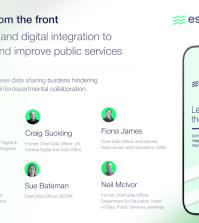Canadian unions call for Phoenix pay system to be ditched

A civil service union has called on the Canadian federal government to scrap its troubled Phoenix pay system and build a replacement in-house.
The call from the Professional Institute of the Public Service of Canada (PIPSC) came after public services and procurement minister Carla Qualtrough said on CTV on Sunday that she couldn’t guarantee that the cost of fixing Phoenix would not reach CAN$1billion (US$780m).
At a news conference held by the 50,000-member union in Ottawa on Tuesday, president Debi Daviau said: “After nearly two years of problems with IBM’s Phoenix pay system, our members have lost confidence in the promise of fixing Phoenix.
“Despite all efforts to fix Phoenix, the number of open cases of pay problems has grown to 330,000 as of October 2017 – with no end in sight. Enough is enough.”
Phoenix shows no sign of rising from ashes
Daviau called on the federal government to task its own IT professionals with building a new pay system based on the latest version of Oracle’s PeopleSoft human resources management system, adapting it to the complex requirements of federal pay, the Canadian Press reported.
It should take about a year to build and properly test a new system, the union leader said, but she was unable to provide a cost estimate for the project at the news conference.
“The government needs to stop throwing good money after bad and start investing in a system that works,” she said. “As it happens, we already have the expertise and the people within the federal public service capable of designing and building it. They just need the opportunity to do so.”
IT system running out of friends
The call was backed by the Public Service Alliance of Canada (PSAC), which represents 180,000 government employees, and opposition party the New Democrats. PSAC national president Robyn Benson said: “We welcome any system that would pay our members.
“If Phoenix has taught us anything, we know that any system will require thorough consultations and testing.”
Tens of thousands of public servants have faced problems with pay since the computerised system was launched in February 2016, with some underpaid and some paid late or not at all. Others have been overpaid, leading to complications when paying tax.
The government has spent hundreds of millions of Canadian dollars trying to fix the problems, including an extra CAN$140m (US$110m) provided in April 2017 for departments to hire additional staff.
Senate takes the lead in abandoning Phoenix
In October, Canada’s Senate confirmed that it would no longer use the Phoenix system for its own employees after 18 months of errors and delays in payments. Parliament’s upper house issued a tender notice for private companies to contract for its payroll and pensions system.
A spokesperson for Qualtrough’s office said on Tuesday that it “continues to work with all partners including union leadership to find innovative and efficient solutions to the pay issues.”
“We called in the Auditor General in order to help better understand the problems,” the spokesperson added. “We look forward to that report when it is made public next week.”
The system has long had problems, particularly around late, inaccurate or missing payments for staff. Michael Wernick, Canada’s Clerk of the Privy Council, told Global Government Forum back in October 2016 that “it’s very clearly a collective clanger, and I worry about it a bit because it’s done reputational damage to the ability of civil servants to deliver IT projects – and that’s not helpful.”
The lessons to be learned from weaknesses on the scheme, he added, include “standard advice that we should have heeded more: you have to really, really sweat the details, and communicate what you’re doing and why you’re doing it. We under-communicated and under-trained, clearly.”
For up to date government news and international best practice follow us on Twitter @globegov
See also:






















I am a federal employee and still have issues with Phoenix, it has been almost 2 years and my case is still not resolved. I said from the beginning, to scrap Phoenix and get a new system that understands how government employees are paid. Between acting, assignment, overtime, maternity leaves, sick time, the list can go on. You need hands on employee handling employees pay, along with a system that works. This has been the worst nightmare the government has inherited and thinks it can be fixed. It will not be fix!!! Stop bleeding the system. Bite the bullet and get a new system that works. It must be nice that the Senate is not using Phoenix and they are getting their regular pay. Even though the reports may say they have clear up some case, you have to remember some employees have maybe 2 to 4 cases, so that is how it balloons up. If I could vote on scrapping the system, you have my vote. I don’t usually send a feed back, but I’m just feed up with Phoenix.
Two questions
A) Isn’t Phoenix Oracle payroll system? If not what is it? Is it COTS or home grown?
B) CRA already using SAP payroll system why not use a similar system, why use Oracle payroll which is plagued by problems
Why are other companies using the Phoenix payroll system without a problem?
I know very little about systems development, but, obviously, the options are:
1) continue to investing in a system that isn’t working
2) scrap it and build a new one (as the Unions suggested)
3) scrap it and contracting out (as the Senate chose to do)
4) go back to the old/proven systems
With Option 1, Canada, which is seen as one of the countries that have the best public services organization/system in the world, ruins its reputation and is wasting public money
Option 2: Makes sense but still “risky”, in my view
Option 3 can be seen as a “temporary” solution. May not be safely applicable to the entire public service, given the size, etc?
I would prefer option 4. Perhaps, “Centralization” (that’s all about it, right?) is not working in this particular case. Need to investigate why it didn’t work though. I believe that good people with good intention are working out there but someone somewhere should stand and say “enough is enough”. Yes, lot of money (the tax I paid, btw) were spent already BUT people get stressed/ill, employees don’t get paid, overpaid, etc. Why continue? Savings are still anticipated at the end? Perhaps, but savings “on paper” only…For instances, given the money that one continues to put on it, I’m not sure that the “Savings/Investment” ratio is high enough to justify the financial viability of this project.
As far as I know the old system is still online! It’s just missing all the data that was plugged into Phoenix. Get the old system up to date and continue using it, then maybe consider writing something from scratch.
In line with Cyrus’ comment B above. If a complete rebuild is determined to be the correct solution for payroll then use the opportunity to kill two birds with one stone. Several years ago, against standard advice, the GoC chose to use two separate Enterprise Resource System (ERP) solutions to run government instead of one unified solution. That is, GoC chose SAP for Finance and Oracle Peoplesoft for HR (and by extension payroll (aka Phoenix)). An ERP by its nature should not be split between two competing vendors and then require ongoing software patching as each vendor evolves in order to exchange data between the ERPs which is a baseline requirement to run any business including a government. Go either all SAP or all Oracle and have one fully integrated system for Finance, HR and Payroll. I can’t believe how much money, time and effort has been wasted. Please fix it correctly for all our sakes.
The comment that “it’s done reputational damage to the ability of civil servants to deliver IT projects” does not take into account the facts that Phoenix was contracted out and that Phoenix is one of many IT projects delivered by civil servants.
Before deciding on a way forward, GC must do root cause analysis of Phoenix failure: incorrect architecture, poor requirements, poor implementation, insufficient testing before deployment, insufficient trained people to run the system, combination of previous, etc. My limited knowledge of Phoenix indicates that an important cause of Phoenix failure is trying to use ERP components from 2 different vendors (SAP FI and Oracle PeopleSoft HR). Oracle itself has not integrated PeopleSoft HR with Oracle Financials. Oracle recommends Oracle HR with Oracle Financials. Thinking that third party software could integrate ERP components from 2 different vendors was misguided. My recommendation is for GC to use ERP components from one vendor. Since Oracle has not integrated PeopleSoft HR with Oracle Financials, easiest way forward is to replace PeopleSoft HR with SAP HR.